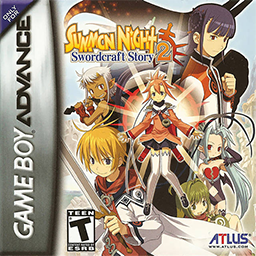
The dissolution of the monasteries, occasionally referred to as the suppression of the monasteries, was the set of administrative and legal processes between 1536 and 1541, by which Henry VIII disbanded Catholic monasteries, priories, convents, and friaries in England, Wales, and Ireland; seized their wealth; disposed of their assets; and provided for their former personnel and functions.

Therese of Lisieux, religious name Therese of the Child Jesus and the Holy Face, was a French Discalced Carmelite who is widely venerated in modern times. She is popularly known in English as the Little Flower of Jesus, or simply the Little Flower, and in French as la petite Thérèse.

Hand Maid May is a Japanese anime television series created by Jūzō Mutsuki and Wonderfarm and produced by NBCUniversal Entertainment Japan, Pioneer Entertainment (USA) LP., and TNK. It is directed by Shinichiro Kimura and Tetsuya Yanagisawa, with Kazuki Matsui handling series composition, Katsuzō Hirata designing the characters and Toshio Masuda composing the music. The anime first aired on Wowow between July 6 and September 22, 2000, running for 10 episodes. An OVA was bundled with a DVD box set released on February 21, 2001. The series centers on the adventures of the main character, Kazuya Saotome, and a robotic Cyberdoll named May. Formerly available from Geneon in the United States, Discotek Media will release the series on Blu-ray Disc in 2024.

Soul of the Samurai, released as Ronin Blade in Europe, is an action-adventure game developed and published by Konami in 1999 for the PlayStation.

Kitiara Uth Matar is a fictional character appearing in the Dragonlance campaign setting created by Margaret Weis and Tracy Hickman. She is the daughter of a disgraced Solamnic Knight named Gregor Uth Matar and his first wife, Rosamun. She is also the half-sister of both Raistlin and Caramon Majere.
Fūma Kotarō was the name adopted by the leader of the ninja Fūma clan during the Sengoku era of feudal Japan. He was a retainer of the Later Hōjō clan. According to some records, his name was originally Kazama Kotarō.
Tanis Half-Elven is a fictional half-elven character in the Dragonlance series of books, which were published by TSR, and are now published by Wizards of the Coast. He is first introduced in the book Dragons of Autumn Twilight by Margaret Weis and Tracy Hickman, in Chapter 1: "Old Friends Meet. A Rude Interruption." They introduce him saying that he was half-elven, armed with a longbow and a sword and wearing leather armor.

Dragons of Spring Dawning is a 1985 fantasy novel by American writers Tracy Hickman and Margaret Weis. The third book in the Dragonlance Chronicles series, it continues the events from Dragons of Winter Night (1985) and sets up the premise of the Dragonlance Legends trilogy, also written by Weis and Hickman.

Zenki is a Japanese manga series written by Kikuhide Tani and illustrated by Yoshihiro Kuroiwa. It was introduced and serialized in the Shueisha publication, Monthly Shōnen Jump from December 1992 to September 1996. Zenki was adapted into a fifty-one episode anime television series in 1995 and a single original video animation in 1997 by Studio Deen and also received five video games. Enoki Films handles the English language version of the anime and its distribution rights.

Mannarasala Sree Nagaraja Temple in Haripad is a very ancient and internationally known centre of pilgrimage for the devotees of serpent Gods (Nagaraja). The famous Nagaraja temple "Mannarasala" in Haripad is nestled in a forest glade, like most snake temples. The Mannarasala Temple has over 100,000 images of snakes along the paths and among the trees, and is the largest such temple in Kerala, India. Couples seeking fertility come to worship here, and upon the birth of their child come to hold thanksgiving ceremonies here, often bringing new snake images as offerings. A special turmeric paste which is available at the temple is credited with curative powers.

Summon Night: Swordcraft Story 2 is an action role-playing game by Banpresto for the Nintendo Game Boy Advance system. It is part of the Summon Night series of games and the sequel to Summon Night: Swordcraft Story. Atlus handled the English translation of the game.

Kallen Stadtfeld is a fictional character in the Sunrise anime series Code Geass: Lelouch of the Rebellion. In the series, she is legally known as "Kallen Stadtfeld" at school, but prefers to be called by her original birth name and mother's surname, using Kallen Kozuki during her revolutionary activities and life after the series concludes. Her Japanese voice actress Ami Koshimizu won "Best Actress in a Supporting Role" for her role as Kallen at the first Seiyu Awards in 2007. Kallen was awarded 8th place in the 29th Anime Grand Prix, then 17th and 16th, respectively, in the following two.

The Second Generation is a collection of five novellas in the fantasy genre by Margaret Weis and Tracy Hickman. It is part of the Dragonlance series.

Bona of Pisa was a member of the Third order of the Augustinian nuns who helped lead travellers on pilgrimages. In 1962, she was canonized a saint in the Catholic Church by Pope John XXIII. She is considered the patron saint of travellers, and specifically couriers, guides, pilgrims, flight attendants, and the city of Pisa.

Pitru Paksha, also spelt Pitri Paksha, is a 16-lunar day period in the Hindu calendar when Hindus pay homage to their ancestors (Pitrs), especially through food offerings. The period is also known as Pitri Paksha/Pitr-Paksha, Pitri Pokkho, Sorah Shraddha, Kanagat, Jitiya, Mahalaya, Apara Paksha and akhadpak.

The Duel is a novella by Anton Chekhov originally published in 1891; it was adapted for the screen by Iosif Kheifits in 1973 and by Dover Kosashvili in 2010.
Nezumi no Sumō is a Japanese folk tale. It tells the story of an old man and his wife who help out some mice who engage in sumo. As a reward, one of the mice gives them enough gold on which to live for the rest of their lives.













